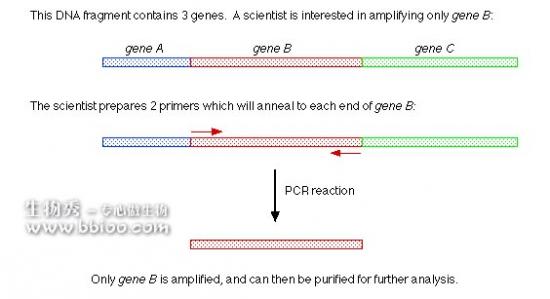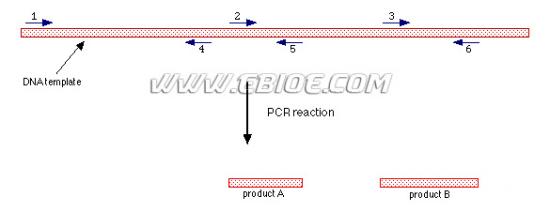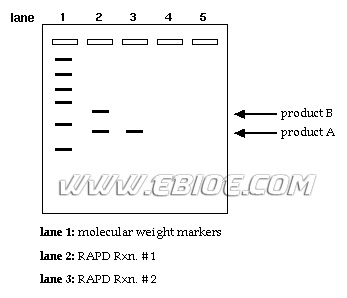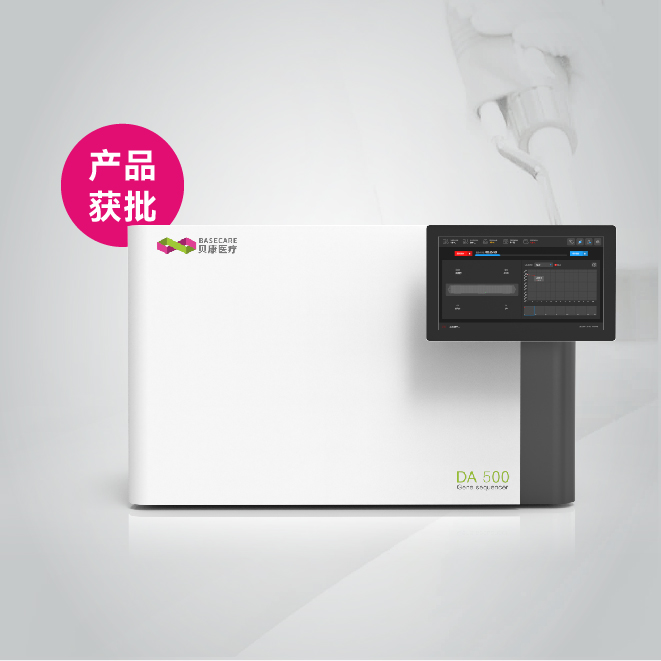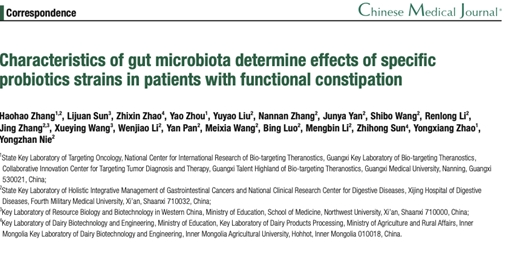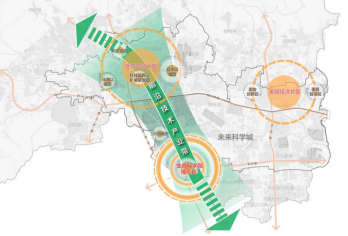RAPD stands for Random Amplification of Polymorphic DNA.
RAPD reactions are PCR reactions, but they amplify segments of DNA which are essentially unknown to the scientist (random).
Often, PCR is used to amplify a known sequence of DNA. Thus, the scientists chooses the sequence he or she wants to amplify, then designs and makes primers which will anneal to sequences flanking the sequence of interest. Thus, PCR leads to the amplification of a particular segment of DNA.
Standard PCR:
However, in RAPD analysis, the target sequence(s) (to be amplified) is unknown. The scientist will design a primer with an arbitrary sequence. In other words, the scientist simply makes up a 10 base pair sequence (or may have a computer randomly generate a 10 bp sequence), then synthesizes the primer. The scientist then carries out a PCR reaction and runs an agarose gel to see if any DNA segments were amplified in the presence of the arbitrary primer.
Remember! In order for PCR to occur:
The primers must anneal in a particular orientation (such that they point towards each other).
The primers must anneal within a reasonable distance of one another.
In this figure which depicts a RAPD reaction, a large fragment of DNA is used the template in a PCR reaction containing many copies of a single arbitrary primer.
RAPD Reaction #1:
The arrows represent multiple copies of a primer (all primers (arrows) have the same sequence). The direction of the arrow also indicates the direction in which DNA synthesis will occur.
The numbers represent locations on the DNA template to which the primers anneal.
Primers anneal to sites 1, 2, and 3 on the bottom strand of the DNA template and primers anneal to sites 4, 5, and 6 on the top strand of the DNA template.
In this example, only 2 RAPD PCR products are formed:
1) Product A is produced by PCR amplification of the DNA sequence which lies in between the primers bound at positions 2 and 5.
2) Product B is the produced by PCR amplification of the DNA sequence which lies in between the primers bound at positions 3 and 6.
Note that no PCR product is produced by the primers bound at positions 1 and 4 because these primers are too far apart to allow completion of the PCR reaction.
Note that no PCR products are produced by the primers bound at positions 4 and 2 or positions 5 and 3 because these primer pairs are not oriented towards each other.
Finding Differences Between Genomes Using RAPD Analysis
Consider the figure above.
If another DNA template (genome) was obtained from a different (yet related) source, there would probably be some differences in the DNA sequence of the two templates.
Suppose there was a change in sequence at primer annealing site #2:
RAPD Reaction #2:
As shown in this figure, the primer is no longer able to anneal to site #2, and thus the PCR product A is not produced. Only product B is produced.
If you were to run the 2 RAPD PCR reactions diagramed above on an agarose gel, this is what you would see:

